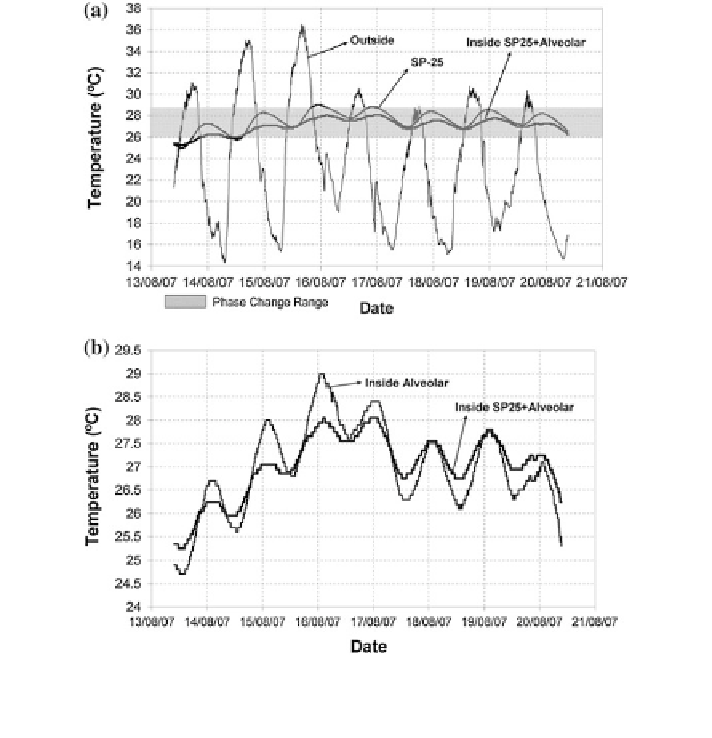Civil Engineering Reference
In-Depth Information
Fig. 8 Alveolar cubicles free-floating experimentation: a Weather conditions and PCM
operating temperature. b Indoors ambient temperature for Alveolar and SP25+Alveolar cubicles
(Castellón et al.
2009
)
The effect of the PCM is clearly visible, resulting in lower temperature varia-
tions in the SP25+Alveolar cubicle than in the Alveolar one. The maximum and
minimum temperature peaks inside the cubicle are reduced, especially at the
beginning of the week. The melting of the PCM during the day results in less
thermal energy entering the cubicle, since it is stored in the walls. When the PCM
is working at the phase-change temperature, even with significant fluctuations in
its temperature (due to the complete melting), the inside temperature of the
SP25+Alveolar cubicle remains more constant than that of the Alveolar.
Again, it is observed that the regeneration of the PCM during the night is only
partially accomplished, as PCM temperature never goes below the 26 C limit. To
improve the results in a real building, some kind of ventilation, either natural or
mechanical, should be used to favour the cool down of the PCM during the night.
Unfortunately, this test of night cooling could not be done as these cubicles had no
windows. The absence of windows was decided to make the cubicles as similar as

